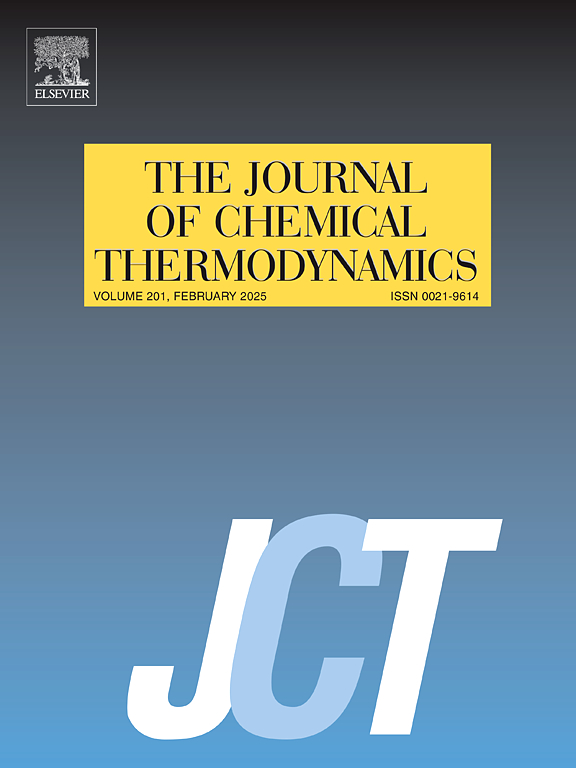Effect of Thiazolidine as thermodynamic inhibitor on hydrate phase equilibrium conditions of carbon dioxide
IF 2.2
3区 工程技术
Q3 CHEMISTRY, PHYSICAL
引用次数: 0
Abstract
This work first reports thiazolidine as a novel inhibitor for carbon dioxide hydrates. Hydrate equilibrium conditions of carbon dioxide with thiazolidine were experimentally determined by isochoric stepwise heating method in this paper. The testing results indicated that adding thiazolidine moved phase equilibrium curve of hydrate toward lower temperature and higher pressure area, demonstrating its effectiveness as a thermodynamic inhibitor. The inhibition effect of thiazolidine on hydrate formation increased when more thiazolidine was added. The inhibition effect was most significant at the concentration of 22.5 wt% thiazolidine within the concentration range measured in this work. Combined with the low toxicity, good biodegradability, excellent water solubility, and simple green synthesis process, thiazolidine is an environmentally friendly thermodynamic inhibitor of carbon dioxide hydrate formation.
噻唑烷作为热力学抑制剂对二氧化碳水合物相平衡条件的影响
本文首次报道了噻唑烷作为二氧化碳水合物的新型抑制剂。采用等时次逐步加热法测定了二氧化碳与噻唑烷的水合物平衡条件。实验结果表明,噻唑烷的加入使水合物的相平衡曲线向低温高压区域移动,证明了噻唑烷作为热力学抑制剂的有效性。噻唑烷对水合物形成的抑制作用随着噻唑烷添加量的增加而增强。在测定的浓度范围内,噻唑烷浓度为22.5 wt%时抑制效果最显著。噻唑烷具有低毒性、良好的生物降解性、优异的水溶性、简单的绿色合成工艺等优点,是一种环境友好型的二氧化碳水合物生成热力学抑制剂。
本文章由计算机程序翻译,如有差异,请以英文原文为准。
求助全文
约1分钟内获得全文
求助全文
来源期刊

Journal of Chemical Thermodynamics
工程技术-热力学
CiteScore
5.60
自引率
15.40%
发文量
199
审稿时长
79 days
期刊介绍:
The Journal of Chemical Thermodynamics exists primarily for dissemination of significant new knowledge in experimental equilibrium thermodynamics and transport properties of chemical systems. The defining attributes of The Journal are the quality and relevance of the papers published.
The Journal publishes work relating to gases, liquids, solids, polymers, mixtures, solutions and interfaces. Studies on systems with variability, such as biological or bio-based materials, gas hydrates, among others, will also be considered provided these are well characterized and reproducible where possible. Experimental methods should be described in sufficient detail to allow critical assessment of the accuracy claimed.
Authors are encouraged to provide physical or chemical interpretations of the results. Articles can contain modelling sections providing representations of data or molecular insights into the properties or transformations studied. Theoretical papers on chemical thermodynamics using molecular theory or modelling are also considered.
The Journal welcomes review articles in the field of chemical thermodynamics but prospective authors should first consult one of the Editors concerning the suitability of the proposed review.
Contributions of a routine nature or reporting on uncharacterised materials are not accepted.
 求助内容:
求助内容: 应助结果提醒方式:
应助结果提醒方式:


